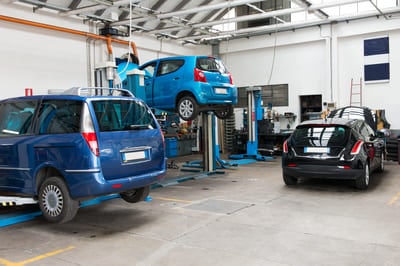How to Determine Which Type of Lift is Right for You
A vertical reciprocating conveyor (VRC) is essential if you want to optimize space in your warehouse. Why? Because a VRC allows access to every square foot of space.
You can use a lift to move heavy loads of inventory and materials up to mezzanine areas or down to basement areas. This lets you make the best use of every part of your building. And the lift method is safer in the long run, which makes it more affordable than using forklifts.
Convinced yet? We hope so!
Now you just need to decide what type of lift you want to install: a mechanical lift or a hydraulic lift. We’ll take a look at both types here.
Mechanical Lifts
Mechanical lifts work by using a cable lifting system. Key points to remember about mechanical lifts are:
- They can be made in almost any shape and size.
- The two types of lifting mechanism are straddle and cantilever.
- Straddle configurations place upright columns on either side of the carriage platform
- Cantilever configurations feature two upright beams located on one side of the carriage platform
In general:
- Mechanical lifts provide a smooth ride, so you won’t damage materials. They can travel between multiple levels and require less maintenance than an elevator or a hydraulic lift.
- They are customizable, so they can work with the needs of your business. Manual controls or full automation, it’s up to you.
- Mechanical lifts can run almost continuously, leaving you with little downtime, and they also require very little maintenance. This type of lift is more expensive upfront but has fewer costs over time.
Hydraulic Lifts

If you’re considering a hydraulic lift, remember:
- Hydraulic lifts also come in the straddle and cantilever variety.
- They tend to take up less space than mechanical lifts.
- Hydraulic lifts are typically less expensive to purchase and install. They are the cost-effective alternative to mechanical lifts.
On the downside:
- Hydraulic lifts are more sluggish than a mechanical lift.
- They have limited cycle rates. So, you can’t use one too much before giving it time to rest.
- Hydraulic fluid is toxic, and you run the risk of leaks. Because they require fluid to operate, they need more maintenance in the long run.
Which Lift Works for Your Needs
The right lift depends on your needs. If you’re working on a small budget, a hydraulic lift might work best. But if your goal is to have limited maintenance over the life of the lift, you might choose a mechanical lift instead. In general, for small spaces, a hydraulic is the way to go. But if you need a lift that has little downtime, mechanical is what you want.
If you’re interested in installing a VRC but you’re not sure which lift will best meet your needs, contact us today. We can help you find the right lift for your loads and goals.
Check out our VRC blog for more information on how mechanical and hydraulic lifts are used in a wide variety of applications.
